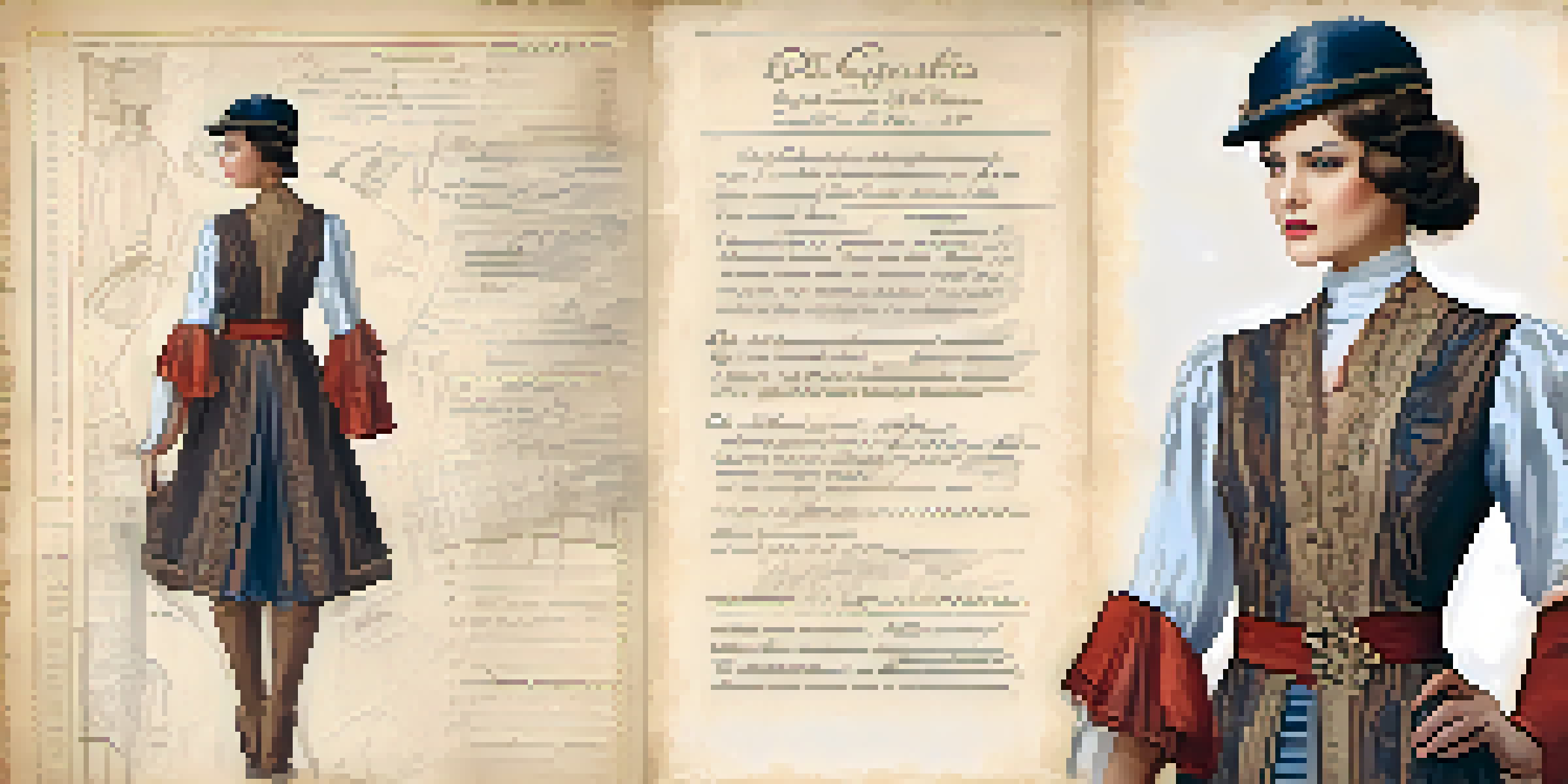The Role of Fashion Designers in Major Film Productions

Introduction to Fashion Designers in Film
Fashion designers play a pivotal role in the film industry, crafting the visual identity of characters through clothing. Their work goes beyond mere aesthetics; it influences how audiences perceive characters and narratives. Just as a painter uses a palette of colors, designers utilize fabrics, textures, and styles to enhance storytelling.
Creating Characters Through Costume Design
Costume design is often the first step in character development. A well-chosen outfit can convey a character's personality, social status, and even their emotional state. For instance, think of how a tattered coat might suggest a character's struggles, while a tailored suit could signify power and control.
Costumes Shape Character Perception
Costume design is crucial in conveying a character's personality and emotional state, influencing how audiences connect with the narrative.
The Collaboration with Directors and Producers
Fashion designers work closely with directors and producers to ensure that the costumes align with the film's vision. This collaboration is crucial; designers often participate in pre-production meetings to understand the themes and moods of the film. Their insights can lead to innovative costume choices that resonate with the audience.
Historical Accuracy and Cultural Representation
When a film is set in a specific historical period, fashion designers are tasked with researching and recreating authentic looks. This attention to detail adds layers of credibility to the film. For example, a designer might study fashion trends from the 1920s to accurately depict the era in a period drama.
Collaboration Drives Costume Innovation
Fashion designers work closely with directors and producers to create costumes that align with the film's vision and themes.
Influencing Fashion Trends Through Film
Fashion designers not only contribute to films but also influence real-world fashion trends. Iconic looks from movies often inspire clothing lines and consumer choices. Think of the impact of Audrey Hepburn's little black dress in 'Breakfast at Tiffany's,' which sparked a timeless fashion trend.
Sustainable Fashion in Film Productions
As the film industry shifts towards sustainability, fashion designers are also adapting their practices. Many are exploring eco-friendly materials and innovative techniques to create costumes that are both visually stunning and environmentally conscious. This change is not just a trend but a necessary evolution in the industry.
Fashion Designers Influence Trends
Iconic outfits from films have the power to inspire real-world fashion trends, as seen with Audrey Hepburn's timeless little black dress.
Challenges Faced by Fashion Designers in Film
Designers often encounter challenges such as tight deadlines and budget constraints. Balancing creativity with logistical realities can be a daunting task. Yet, overcoming these obstacles often leads to unique solutions and memorable costumes that enhance the film's overall impact.
Conclusion: The Lasting Impact of Fashion Designers
In conclusion, fashion designers are much more than creators of clothing; they are storytellers who weave visual narratives through their designs. Their work enriches films and leaves a lasting impression on audiences. As we continue to enjoy cinema, let’s appreciate the artistry and effort that goes into costume design.